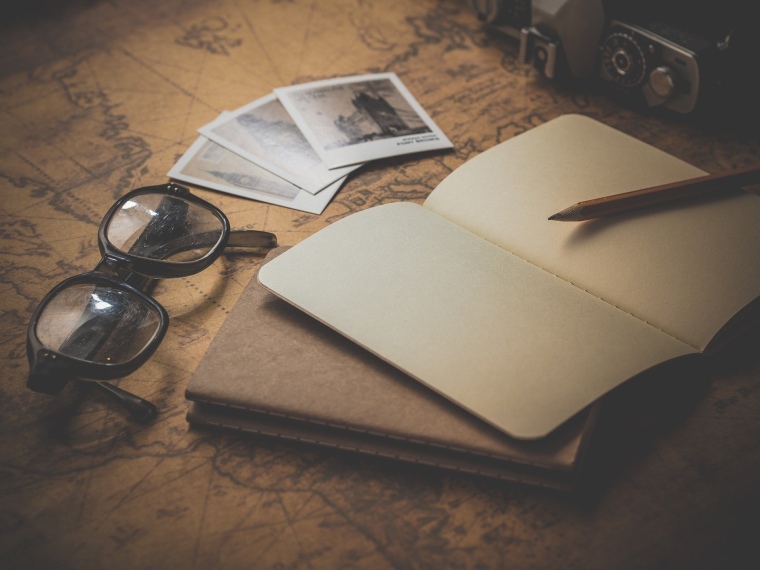Last week I talked about how travel doesn’t just happen. It takes planning, and intentionality. I shared a bit about how I learned about the importance of being intentional in planning and saving for travel if it is something that you are interested in doing. If you missed that post, I would recommend checking it out here before you continue.
Today I want to look at 6 steps I’ve used to make regular travel saving a part of my budget. I’m not a financial expert in anyway, and these steps are in no way exhaustive, or the only way to go about creating a plan. But I hope that these steps might help you to find the time and money to include travel in your life.

Step #1: Do you actually want to Travel?
I can already hear you saying “Of course I want to travel, I’m here aren’t I?” But before you skip past this step, I want you to take a few minutes to really think about it. Do you really want to make the time and save the funds required for travel? Or do you just think that you want to travel, or that you should want to travel?
These days it can seem like travel is something that everyone does, or wishes they were doing. But it is okay for travel to not be one of your priorities. It is okay to read travel blogs, and follow travel pages on instagram or Pinterest, and not want to travel yourself. Maybe there are other things you would prefer to spend your resources on, and that is okay.
We don’t have unlimited resources. And this means we need to prioritize and make decisions about where we want to spend the resources we have. And this applies just as much to non-monetary resources such as time and energy. If travel isn’t something you want to prioritize, then you won’t follow through on the changes you would need to make to save and plan for travel. So take the time to truly think about this step. And keep reading, because you can use the following tips to save for and explore your preferred activities.
Step #2 – Take a look at your Time
It’s important to recognize that time is as much, or more, of a limited resource as money. Think about how much time you could set aside for travel or exploration, as well has how much time you want to set aside for travel. You might be lucky enough to have 5 weeks of vacation time, but that doesn’t mean you’ll necessarily want to spend all that time on travel. Consider also how you may be able to make use of long weekends for travel and exploring.
While you’re looking at your potential vacation time and long weekends, you’ll also need to consider other activities or obligations already slotted into those times. Christmas, for instance, might be a time of year where you have time off, but it may not be time that is free to dedicate to travel.
Also keep in mind that you’re going to need to consider your time and money alongside each other to determine how much you can travel. Quitting your job might give you seemingly infinite time to travel, but it’s going to seriously reduce the budget you have for travel.
Step #3: Take a look at your Budget
I will admit, this is typically the least exciting part of the process, but it is also one of the most necessary steps. And it’s important that you take the time to do it with care. You need to have a complete understanding of your budget before you can decide whether some of it can be put aside for travel savings. I’m not going to go into detail here about setting up a general budget, but if you have not done this before, there are many good articles and tips only a Google search away.
For our purposes you will be looking at the money you have in miscellaneous, or more discretionary fund categories. Your landlord isn’t going to like it if you decide to slash your rent budget by $100 a month, for instance. I want you to figure out how much money you have in these categories and then write down exactly where that money goes every month. You need to be precise. This won’t work if you just write down $200 for miscellaneous spending.
Write down everything from clothes shopping, to Netflix, to your morning coffee purchases. If your miscellaneous category varies, then maybe track it for a couple months. Write down exactly how you spend the money that’s not going directly into non-negotiable bills or long-term savings and emergency funds. This step is tedious, but it’s what will allow you to figure out where you can save in the next step.
Step # 4: Find places where you can save
Okay, so you’ve analyzed your budget and figured out exactly where your money is going, now you can start to figure out where you can cut expenses to start to save for your future travels. How much you can save regularly will determine what types of trips you can take and how often, along with how long it will take you to save for each trip.
What if you made your coffee at home everyday? How much could you save? Write it down. How much would you save if you only buy one coffee out a week? You might be surprised at how much you can save just making this one change. Maybe you spend $50 on dining out each week. If you were to cut that back to every other week, you could save $100 a month. That’s $1200 a year! Think of the travel you could put that towards.
Continue going through your list until you’ve written down all the possible places you could save. Is this number higher or lower than you expected? If this number is more than you want to save for travel, then go ahead and add some of those things you cut back into your budget. If it’s lower than you would like, then you can try to go back in and cut more things, but make sure you’re realistic here. It’s better to save at a slower pace than to make cuts that aren’t going to work for you.
It’s one thing to say that you’re going to cut out all dining, but if that’s something you love, you aren’t going to be happy cutting it out completely. The goal here is not to make saving for travel painful. You have to figure out what saving plan is going to work for you. If you can’t imagine cutting out your daily coffee, then don’t cut out your coffee budget! I’m not kidding. Find the things to cut back that work for you.

Step #5: Set up your Travel Savings Bucket
Once you have a monthly figure, break it down into the frequency of your pay schedule. In general, it’s easier to save consistently if you put aside the amount immediately off your pay. Personally, I work within a looser budget, and my spending categories aren’t always strictly regulated. But I took the time to figure out how to make this work for me, and how much I could save per pay. And I make sure to put that money into my travel savings as soon as I get paid.
You need to have somewhere to put this money you’re saving. My bank has a savings account type that’s free to setup and free of expenses and I have two of them – one of which is dedicated to travel. Maybe for you this means envelopes of cash, or a travel jar. My only suggestion would be that this should be separate from your regular, daily banking account. Because if it stays in your main account, you’re going to spend it.
If, after a couple months, you find that your new budget cuts aren’t working, then reduce your savings amount. It’s better to find something you can stick with consistently then to constantly dip into it because you’re putting aside more than you can handle. And if something comes up one month and you really can’t afford to save for travel, that’s okay too. It makes no sense to go into debt to “save” for travel.
Step #5(b): Alternative Option
If putting aside a set amount of money from each pay doesn’t work for you, that doesn’t mean you can’t save for travel. Another option might be to have a monthly budget category for your discretionary expenses and roll any leftover money at the end of the month into your travel savings. Or maybe you use a “loose change” method, where you dump all loose change into a jar each week.
Neither of these methods have worked that well for me, but the point is to find the money to travel in a way that works for you. The key is to be intentional. If you’re intentional about your approach, then you’ll see your travel budget start to grow over time.

Step #6: Start to Dream
You might think that this step should be higher on the list, but hear me out. In my experience, dreaming about a big trip and then seeing the price tag for it before you’ve established your travel savings plan, is just as likely to make you overwhelmed as it is to encourage you to save. You’ll see the price tag and your immediate reaction will be that there’s no way you’ll be able to come up with that kind of money in this lifetime.
But, if you’ve gone through all the previous steps, you now have a realistic idea of how much you can save in a month, a year, or 5 years. You can now look at that big ticket trip with a better understanding of how long it would take to save for it. You might still decide it’s too expensive, but you’ll be making an informed decision. And maybe you’ll discover that your dream trip is actually possible. Saving for 3, or even 5 years, might not seem like that long if you thought it would never be possible.
That’s why, in my opinion, it is better to have a full understanding of your potential for saving before you start to dream of the trips you want to take. Remember, you can always go back and increase or decrease your savings goals as you figure out your travel dreams. Maybe the trips that you want to take cost less than you imagined, and you can take more trips on your budget than you thought, or lower your monthly savings. Or maybe you decide that your dream trip is worth packed lunches for a year.
(Side Note: I am a big fan of dreaming and planning trips that I know I probably won’t ever be able to take. So I am 100% not saying to stop thinking about dream trips… but you don’t need a budget when you’re fantasy travelling.)
Step #7 (Bonus Step) – Brainstorm new ways to find money
I hesitated to include this step, because I want this to be a post about finding the resources to travel with in the budget that you already have. I don’t know about you, but I’m inclined to believe that I’m already busy enough without needing to find an additional stream of income to be able to travel.
But I decided to put it out there as something to consider.
Perhaps you have found that what you can save is not going to get you on the trips you want to go on in the time period that you want. If this is the case, you might consider brainstorming an additional income stream. Perhaps you can pick up a part time job. I had a colleague once who picked up shifts at a movie theatre so that he and his wife could afford to go on a cruise. Or maybe you’re crafty and can start to sell some of your creations. There are many ways that you could pad out your travel budget if you so choose.
Final Thoughts
If you have ever been frustrated with thoughts that travel isn’t possible for you, I hope that what you take away from this post is that budgeting and planning to travel doesn’t just happen. It takes planning, and intentionality. It might take time and patience, but if it’s something you really want to do, it is may be more possible than you initially thought.
And if travel saving isn’t possible for you right now, I hope you’ll still stick around. You can enjoy reading travel posts, and dreaming about travel, even if you never plan to travel. And, as I mentioned in my travel story, travel and exploring isn’t just about the “big” trips. Sometimes it’s about a tank of gas and a bit of research into free, or low cost destinations close to home. I’m just as interested in exploring that type of travel here.
How do you budget for travel? How do you fit travel and exploring into your life?
Until next time,




